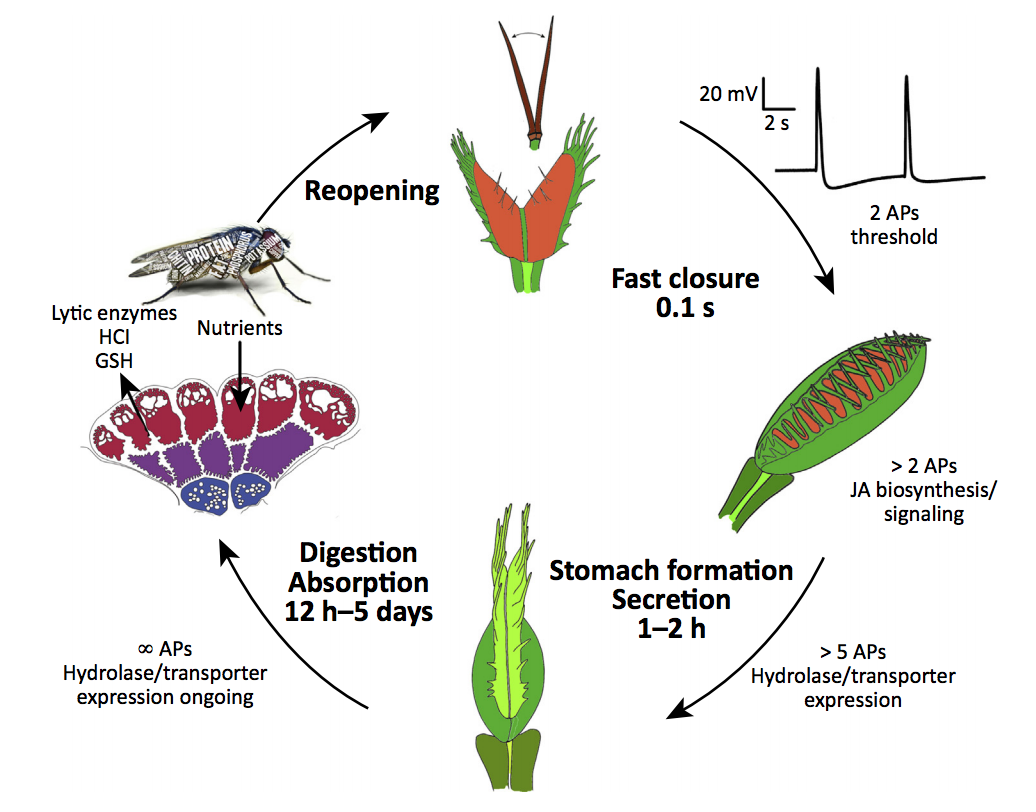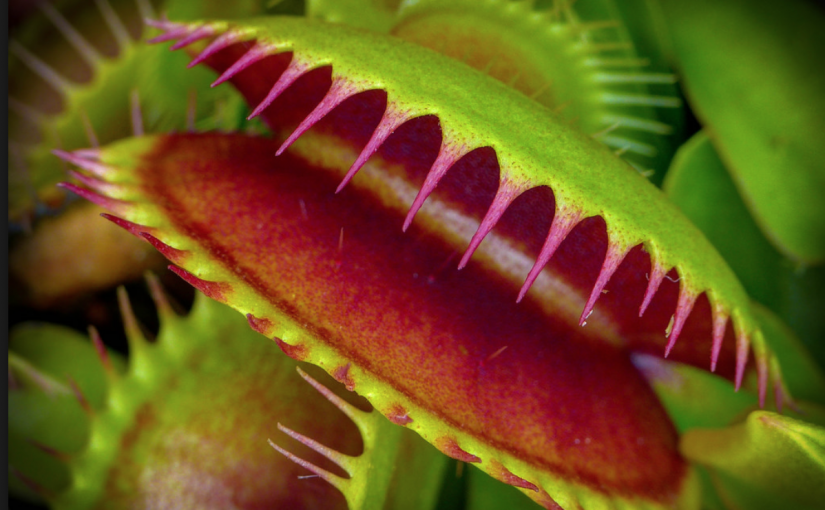What’s green, grows in swamps and eats bugs? The venus fly trap. Unique to its kind the venus fly trap catches, traps and digests its prey. When starving, the venus fly trap develops intensely red colored traps to attract insects. The mechanics of this plant closing its “mouth” are quite unique and very interesting. It has sensory trigger hairs which close when contact has been made. The Venus fly trap relies on a electrical circuit which sends electrical signals to tell it when to open or close, the signal is all or nothing with no inbetween. According to Rainer Hedrich, and Erwin Neher who wrote Venus Flytrap: How an Excitable, Carnivorous Plant Works, “While exploring the inner trap lobes, attracted insect

visitors accidentally displace sensory trigger hairs, causing the firing of individual action potentials and rapid trap closure. Ongoing electrical stimulation causes the capture organ to become hermetically sealed, giving the victim no chance of subsequent escape.” As you can see in the picture on the right, this is a simple diagram of what exactly happens and how long things take. “Under the ordinary conditions of the Venus flytrap, it takes two mechanical stimuli within a thirty second period to cause a signal for trap closure, but at higher temperatures even just one stimuli may suffice.” (Brown and Sharp, 1910). It is been known that scientists believe the snap-trap mechanism of the venus fly trap is one of the fastest movements that has been observed in the plant kingdom. Fascinating to say the least, especially for a plant that only grows an average of 13 cm tall with  only a 3 cm trap. Crazy to think such small plants can be such a big predator to insects. The picture above in drawing form depicts the three stages of the trap from all the way open to fully closed. The open and closed stages of the trap are rather predictable and understandable. The semi-closed stage is the fraction of a second where the trap is “waiting for further mechanical stimuli to ensure that it has caught a living prey.” (Sami Lehtinen, 2018) Although venus fly traps get nutrients from photosynthesis they live in poor soil and are healthier when they get nutrients from insects as well. All in all, venus fly traps are an extremely fascinating carnivorous plant with so much information to still be learned.
only a 3 cm trap. Crazy to think such small plants can be such a big predator to insects. The picture above in drawing form depicts the three stages of the trap from all the way open to fully closed. The open and closed stages of the trap are rather predictable and understandable. The semi-closed stage is the fraction of a second where the trap is “waiting for further mechanical stimuli to ensure that it has caught a living prey.” (Sami Lehtinen, 2018) Although venus fly traps get nutrients from photosynthesis they live in poor soil and are healthier when they get nutrients from insects as well. All in all, venus fly traps are an extremely fascinating carnivorous plant with so much information to still be learned.
Sources used in this article
